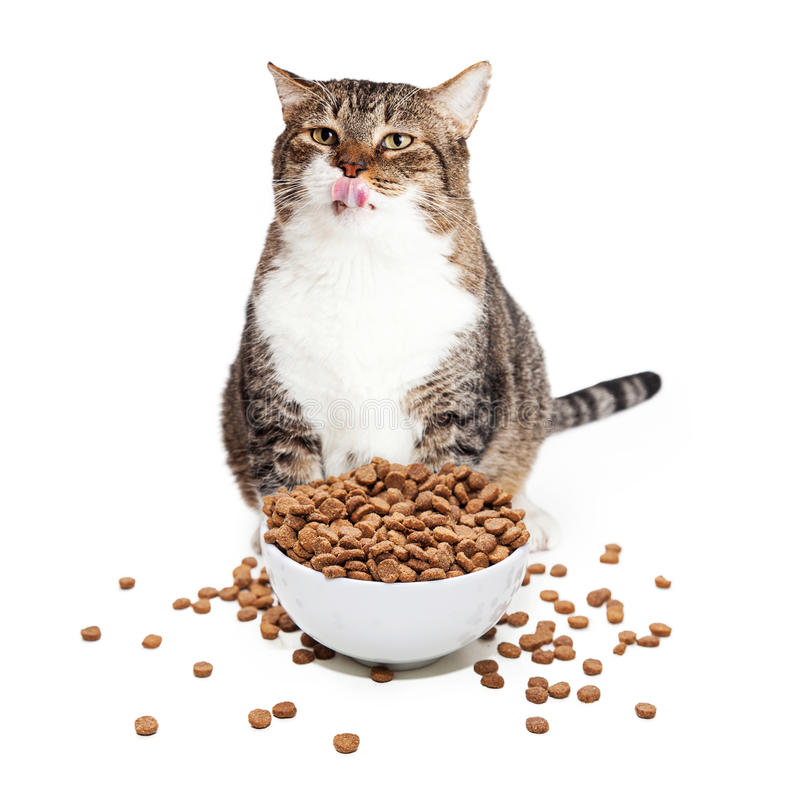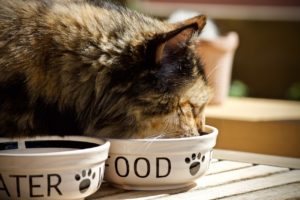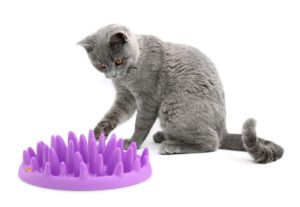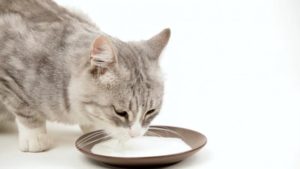Are Your Feeding Habits Hurting Your Cat?

While felines can be finicky about the food they eat, responsible owners can both improve their pets’ nutritional intake and prevent them from joining the estimated 58 percent of American cats who are overweight or obese.
- Never free-feed your cat. The practice of keeping her bowl filled all the time is an open-ended
 invitation to eat and eat and eat. This can eventually lead to obesity and diabetes. The best way to feed her is by measuring her food and scheduling several mealtimes per day or by using food puzzles instead – after first asking your vet how much food she should be eating.
invitation to eat and eat and eat. This can eventually lead to obesity and diabetes. The best way to feed her is by measuring her food and scheduling several mealtimes per day or by using food puzzles instead – after first asking your vet how much food she should be eating.
- Never put your cat on a vegan diet. As an obligate carnivore, her digestive tract isn’t designed for digesting non-meat food, and to maintain her overall health, she must have meat. Cats also require significantly more protein in their diets than either dogs or people.
- Keep her eating environment calm. If she’s snubbing her food bowl, and health issues aren’t the cause, stress may be the culprit. She may feel threatened by other pets in your home, disturbed by the noise of certain appliances, or rattled by too many people walking past while she eats. Set her food bowl down in a quiet place away from all distractions to allow her to eat undisturbed.
- Don’t give her too many treats. While cat treats may be small in size, they’re loaded with calories, and the consumption of so many extra calories can lead to weight gain and obesity. If your kitty expects or “demands” a treat, be clever – and creative — about it. Make her “work” for her treat by throwing it across the room or hiding it inside a food puzzle. Or better still, redirect her begging behavior to another activity like an interactive game or a lengthy petting session.
- Don’t let her drink milk. Familiar images of kitties lapping up milk from a saucer may have seemed both appealing and adorable in the past, but milk isn’t healthy for cats. Like people, some cats are lactose intolerant and have trouble digesting milk. Another negative: milk is rich in calories and could cause your kitty to gain weight.
- See that her food fits her life stage and lifestyle. When feeding your cat, you must take into account both her age and her activity level. If she’s a kitten, she should be introduced slowly to a variety of foods so that she doesn’t grow up to be a picky eater. If she’s a senior, you must monitor her waistline since some older cats find it difficult to keep weight on. You must also ensure that she’s drinking enough water. As always, though, it’s essential to first speak with your vet about the best diet plan for your cat based on her age, health and body condition.
- Don’t alter her diet too quickly. Slow and steady are the ultimate keys to success. It may seem like a good idea to help your cat lose weight by immediately reducing the amount of food she consumes and/or changing the food itself. But drastically reducing the amount of food she eats can lead to hepatic lipidosis, a potentially fatal liver condition, while sudden changes in her food can cause vomiting and/or diarrhea. If you’re intent on changing her diet, always do it gradually and in consultation with your vet.



